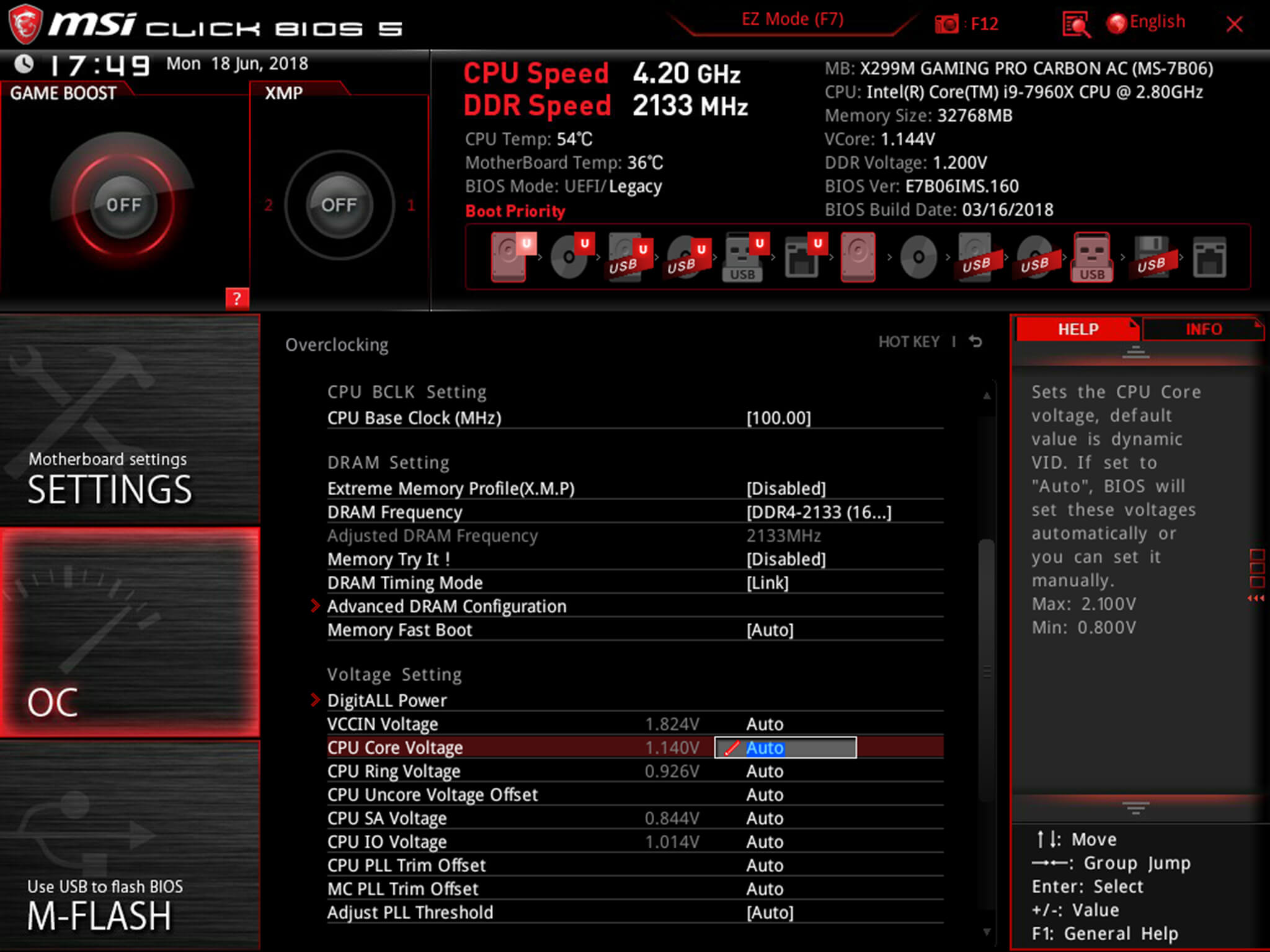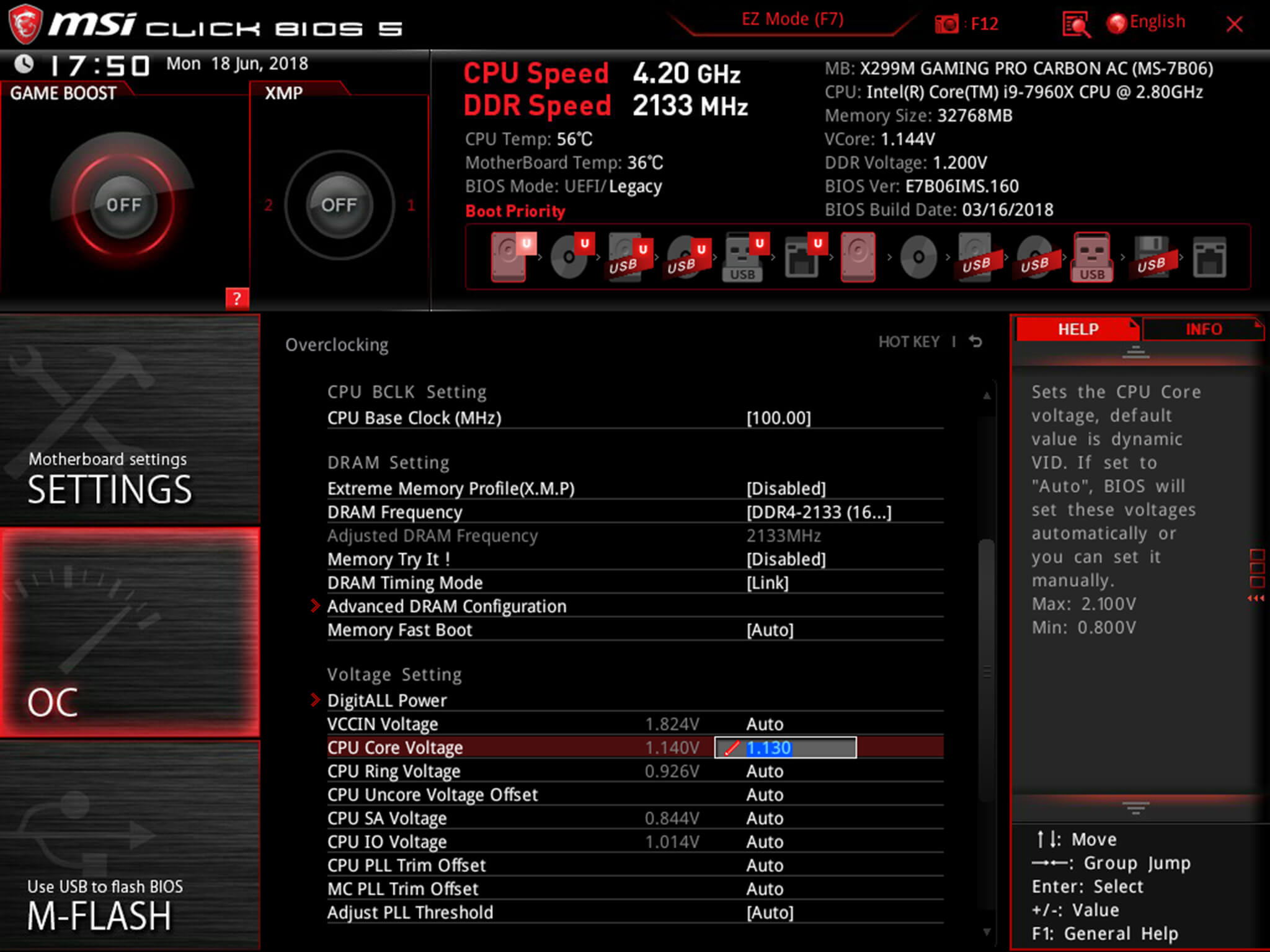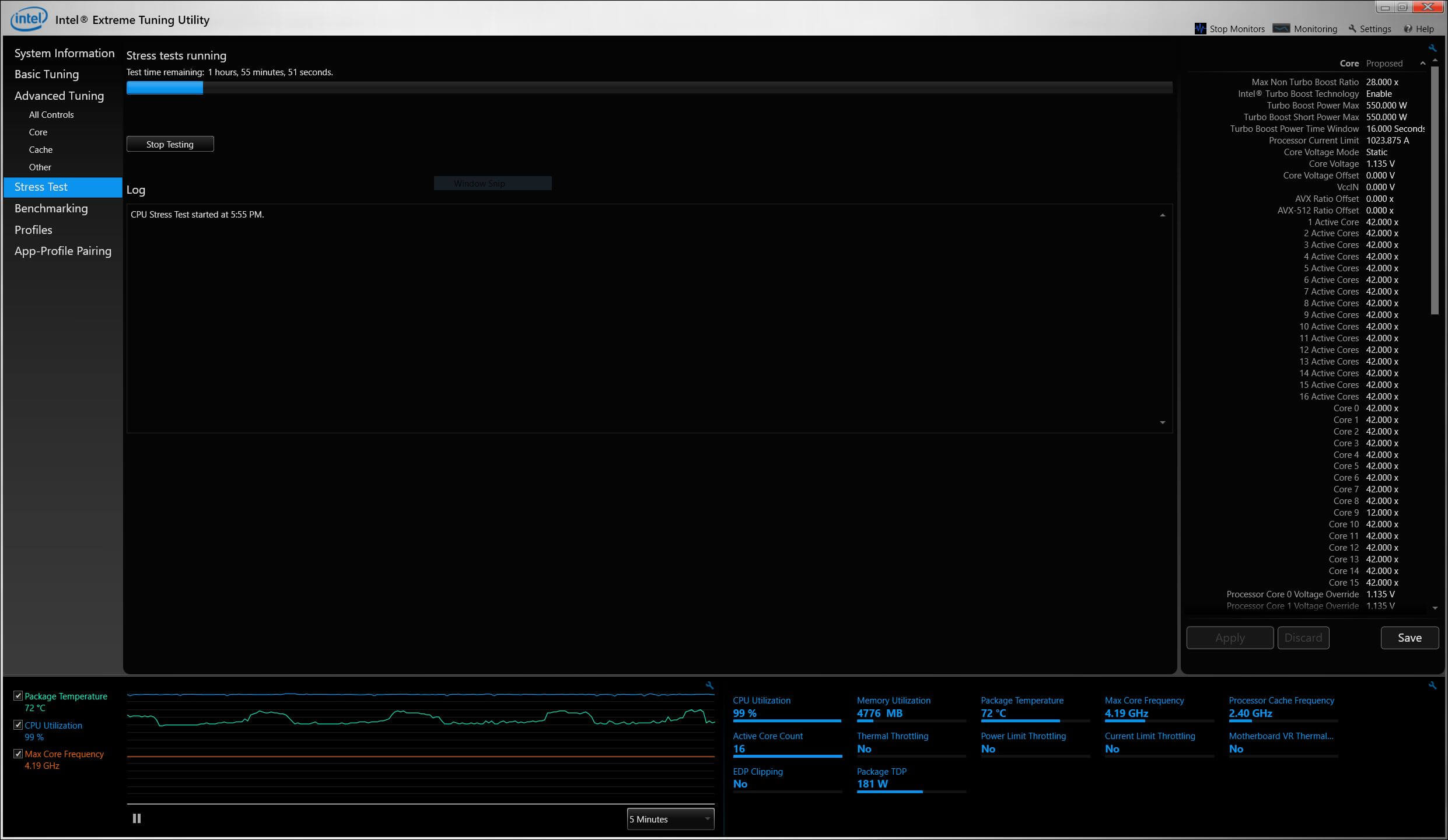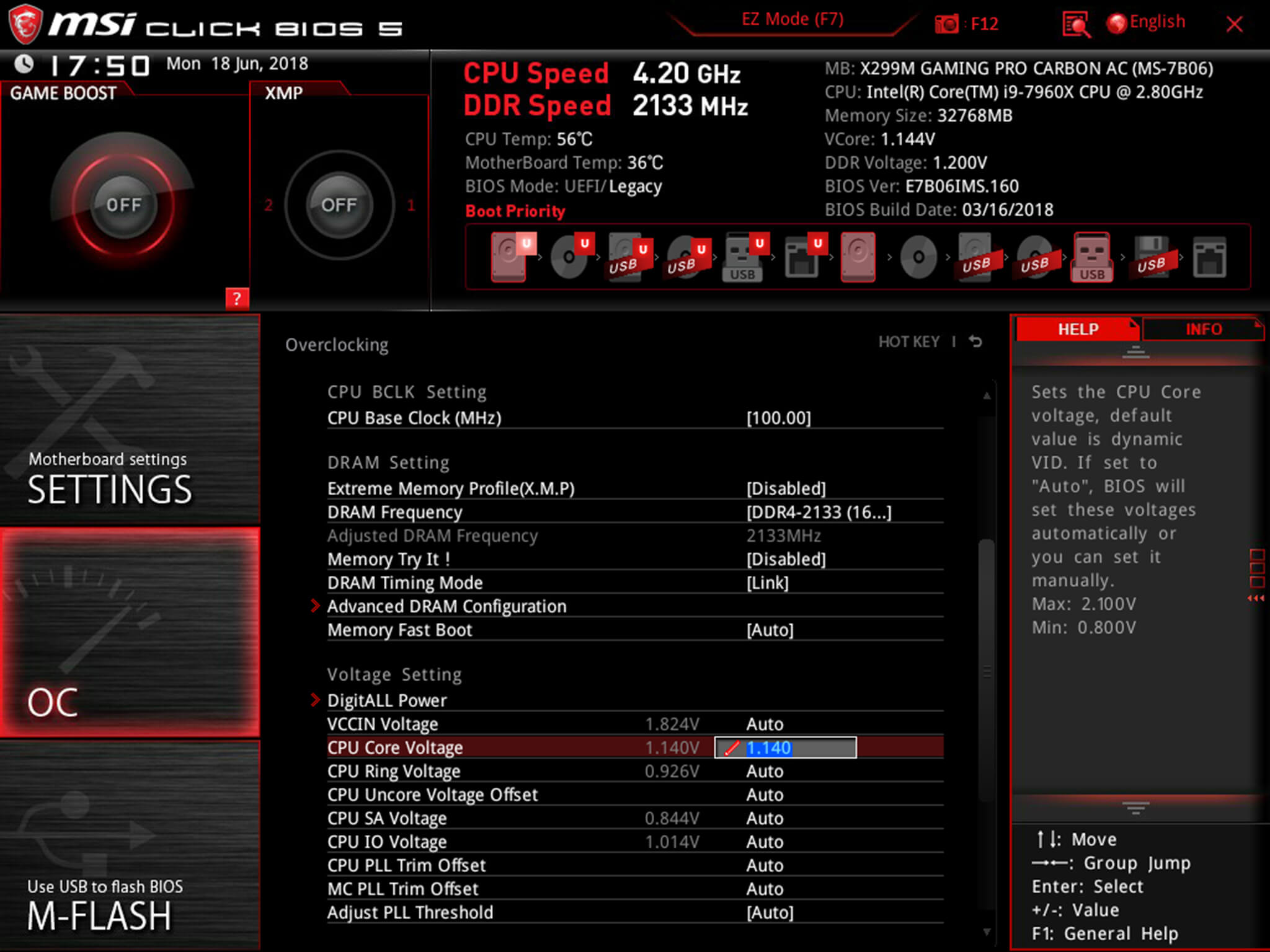【1979 Archives】
Why it matters:Vcore979 Archives or core voltage, is the voltage that is supplied to power your CPU. The amount of power the CPU uses and the amount of heat generated are tied to the amount of voltage it draws. The voltage identification definition, or VID, determines the amount of voltage your CPU needs to maintain stability at the default clock speeds.
The core voltage is different for each processor model, and while all CPUs of the same model have the same VID, not all samples maintain stability at the same clock speeds and Vcore due to slight variations in silicon quality. Every sample of the same CPU model is tested to maintain stability at the default speeds and the VID determined by the manufacturer.
Core voltage typically maintains a constant value while your CPU is in use; however, sometimes under heavy workloads vcore can fluctuate. This is known as Vdroop and can be corrected with load-line calibration. This applies additional voltage as load increases to maintain your CPU's stability.
Vcore and Overclocking
When it comes to overclocking, you can only push your CPU's frequency so far before your CPU starts to experience instability. Programs might begin to crash or hang up, game performance could suffer or your computer could even fail to boot. This is because your processor isn't getting enough voltage to maintain system stability.
Increasing voltage will allow you to dial in the perfect overclock.
To adjust the voltage, you'll need to boot into your motherboard's BIOS and make adjustments there. The Vcore is expressed as a three decimal value, such as 1.235v. By default, the voltage control is set to auto; this can be overridden by typing in any value. Make sure not to exceed the recommended maximum for your processor.

Before fine-tuning the Vcore, it's important to find a good baseline value for a given speed. This varies from model to model but it can be helpful to read reviews for your CPU, specifically ones that focus on overclocking.
Most publications will list the voltage they required to keep several different speeds stable. Every CPU sample is different and you will need to fine-tune the voltage before calling it done; however, these values do provide a good starting point.

If you boot your machine and don't find any stability issues, then you know it's time to start decreasing the voltage. When overclocking, you want to find the lowest voltage required to maintain stability. More voltage equals more heat and this will allow you to keep temperatures under control.

The safest way to adjust voltage is with increments of .01 volts. Decrease voltage until your computer starts showing signs of instability under load. Use a program like Intel's Extreme Tuning Utility (XTU) or Prime95 to stress test your processor.
If the test fails or crashes, then you need to raise the voltage back up to the previous stable point. For optimal efficiency, you can increase the voltage by .005 instead and again test for stability.

Conversely, if your overclock isn't stable at your baseline voltage, you will then need to increase the voltage until your computer shows no adverse effects and then decrease in increments of .005 to fine tune.

Undervolting
Overclocking is not the only time it can be useful to adjust voltage. As mentioned, higher voltage levels cause your CPU to generate more heat, regardless of frequency. Some CPU samples may have a higher VID than is actually required at the default frequency. Undervolting your processor allows your to maintain stability while decreasing temperatures and extending the life of your processor.
It's a common misconception that disabling Turbo Boost is a more effective substitute for shedding heat. While this does result in decreased temperatures, it is not an alternative as the purpose of undervolting is to maintain the same level of performance while generating less heat. When making adjustments, the same principles apply here as with overclocking, decrease Vcore in increments of .01 and then fine tune with adjustments of .005.
Further Reading
- Top 5 CPUs for Gaming
- How We Test: CPU Gaming Benchmarks
- The Best CPU Coolers 2018
Search
Categories
Latest Posts
Things AMD Needs to Fix
2025-06-26 13:58How to make money on Zoom and Facebook classes
2025-06-26 13:21Instagram husband's parody wellness account is comedy gold
2025-06-26 13:16The Lincoln Project is giving liberals something no one else can
2025-06-26 12:09Popular Posts
How This Long
2025-06-26 14:13iPhone 12 production might be affected by power chip shortage
2025-06-26 12:10Amazon Big Spring Sale 2025: Best portable speaker deal
2025-06-26 12:08Featured Posts
Productivity Boost: Enable 'Night Mode' on All Your Devices
2025-06-26 14:10'Bachelor in Paradise' inadvertently joins the impeach Trump train
2025-06-26 13:17How Tesla super fans get the add
2025-06-26 12:53How to Secure Your Android Phone and Get the Most Out of Smart Lock
2025-06-26 12:36Popular Articles
Mary Shows Up
2025-06-26 14:25Obama's Charlottesville response just became most
2025-06-26 14:16Tesla's 'Full Self
2025-06-26 11:58Episode 4: The Wave of the Future
2025-06-26 11:57Newsletter
Subscribe to our newsletter for the latest updates.
Comments (2535)
Boundary Information Network
Waitin’ on the Student Debt Jubilee
2025-06-26 14:23Free Roaming Information Network
Xbox Series X review: One small leap for one giant console
2025-06-26 14:09Resonance Information Network
No matter who wins the election, you still have to care about politics
2025-06-26 12:38Habit Information Network
The Gap's hilariously bad unity sweatshirt accidentally unites people who hate it
2025-06-26 12:34Impression Information Network
Musetti vs. Diallo 2025 livestream: Watch Madrid Open for free
2025-06-26 11:45